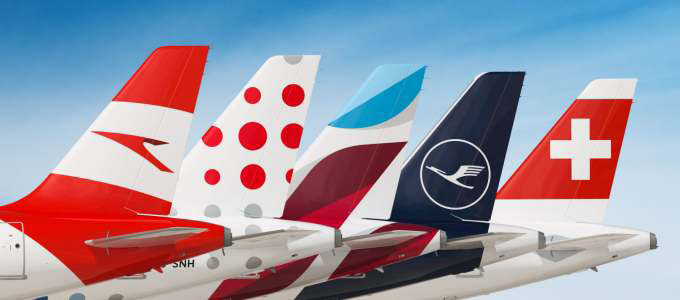European airlines need SES and more in fragmented airspace
European regulators will tackle several challenging air transport issues in the coming months, including airport slots, passenger rights, and sustainability.
By R. Chandrakanth
There are 50 countries in Europe per the United Nations with a population of over 747.8 million people in four distinct regions – Eastern Europe (most populous bloc and not so developed); Western Europe (developed); Northern Europe (technology hub)and Southern Europe (historically rich).
Unlike North America, which is one domestic market for airlines, the airspace in Europe is fragmented.
It was this that led to the formation of the Single European Sky (SES) initiative in 1999 to improve the performance of air traffic management (ATM) and air navigation services (ANS) through better integration of European airspace. The SES, upon completion around 2030-2035, could triple airspace capacity, halve the costs of ATM, improve safety tenfold and reduce the environmental impact of aviation, benefitting airlines.
According to RafaelSchvartzman, Regional VP for International Air Transport Association (IATA) Europe,“The European Parliament and EU states should focus on what will help aviation build back better from the COVID-19 crisis. That means doing everything possible to reduce costs, cut emissions, strengthen safety and improve efficiency. It is what travellers expect and what airlines need.” Similar views have been echoed by Ryanair CEO Michael O’Leary and Lufthansa CEO Carsten Spohr, seeking quicker move towards SES.
Airlines jostling for market
Why are we talking about SES? For the simple reason that Europe has 195 airlines offering scheduled passenger services, from regional to intercontinental flights, compared to 98 in North America and with Europe’s fragmented airspace, airlines are operating in a highly competitive environment.
In Europe 28 airlines make up 80 percent of available seats, compared to just seven airlines in North America, raising issues of profitability to so many other airlines, according to IATA.
Airlines are all jostling for airspace, network, passenger and cargo growth and survivability. Then there is the impact of carriers from the Middle East which have made big global strides into Europe, Asia and Africa.
Bothlow-cost carriers (LCCs) and Middle Eastern airlines have not only increased market share but also managed to keep costs down and European carriers (both full service and LCCs) are looking at SES as one of the answers to improve efficiencies and become cost-competitive.
Need more deregulation
“Europe, just like the rest of the world, relies on air connectivity, which is vital for society, tourism, and trade. Business users of the European air transport network–large and small—have confirmed this in a recent IATA survey: 82% say that access to global supply chains is “existential” for their business. And 84% “cannot imagine doing business” without access to air transport networks. The deregulation that delivered the Single Aviation Market is one of the significant successes of the European project and it would be a travesty if regulations that failed to take proper account of the realities of the airline business were to undermine this achievement. New evidence shows that Europe benefits from many different kinds of airlines and it needs all these different business models – and the services they provide – to thrive,” says Willie Walsh, IATA’s Director General.
European regulators have chosen to tackle several challenging air transport issues in the coming months, including airport slots, passenger rights, and sustainability. These all have a potential impact on the choice and value that European travellers have come to expect, and it is vital that regulators have the full picture on the contribution different airline business models bring to air connectivity and airlines are broadly classified as full-service network carriers (FSNCs); LCCs; regional carriers; charters and hybrid carriers.
Here, we are looking at FSNCs and LCCs in Europe and the multiple headwinds faced by them from Covid-19, the prolonged Russia-Ukraine conflict, and operational challenges as demand is returning back across Europe. The big airlines have taken the lead, showing resilience in turbulent times.
It goes to the credit of a European airline to have carried the maximum passengers, post-Covid. The Ryanair Group, the largest airline fleet by passengers, flew 97 million passengers in 2021-22, indicating return to near normalcy.
In 2019-20 the passenger levels had peaked to 148.6 million. Ryanair Group subsidiaries are Buzz (61 aircraft); Lauda Europe (29); Malta Air (158); Ryanair (279) and Ryanair UK (13) with total fleet coming to 540 and 11 are on order. On a typical day, Ryanair carries more international passengers than any other airline in the world.
So also, easyJet, a British multinational airline group, achieved a record headline EBITDAR of £674 million in Q4 2022 with load factors returning to 92% and seat capacity to 26 million. easyJet is the eighth largest airline in the world, flying to around 1,000 destinations in over 30 countries with a fleet size of 324.
Then we have the Lufthansa Group which has the largest airline fleet in Europe with 709 aircraft plus 29 on order. The Group welcomed on board 102 million passengers in 2022, compared to 47 million in 2021, just over a million more than Aeroflot.
The Group CEO Carsten Spohrsaid recently ‘Lufthansa is back’ and reeled out how the group had made an operating profit of 1.5 billion euros, achieving an unprecedented financial turnaround in just one year. Lufthansa Group includes Lufthansa, Swiss International Airlines, Austrian Airlines, Brussels Airlines, and Eurowings.
An airline to watch is Turkish Airlines which carried a little over 72 million passengers in 2022, hoping to touch 88 million passengers in 2023. Turkish Airlines Chairman Ahmet BolattoldAnadolu, Turkey’s state-run news agency, that the airline would make $3.8 billion investment next year and expects about a 17-20% increase in capacity, with fleet size expected to go up from 396 to 427 by the year’s end. Turkish Airlines serves 331 destinations from a single airport than any other airline in the world.
Airlines struggling
While passenger loads are increasing, there are airlines which are still struggling due to various factors.
Russian flag carrier Aeroflot saw its group passenger numbers drop 8.2% year on year in the first nine months of 2022. “We carried 31.3 million passengers as a group in the first nine months of 2022,” Aeroflot CEO Sergei Aleksandrovskysaid while mentioning that it was down from 34.1 million in the same period of 2021.This is a fall-out of the Russia-Ukraine conflict.
British Airways, for instance, which has lost its sheen, has been troubled by staff shortages and other operational issues. However, it reported its first operating profit since Covid-19 with a profit of £54 million for the second quarter of 2022.
At a group level IAG made an operating profit of €293 million.BA’s capacity measured by Available Seat Kilometres was around 30% less than the same quarter in 2019 and passenger revenue was also 27% less. There are challenges the airline needs to overcome and is looking at ATM and ANS as one of the routes. British Airways in 2021 announced joint business with Qatar Airways, offering customers access to more destinations on their networks.
Besides the above-mentioned airlines, other big airlines of Europe include Airfrance-KLM; IAG (British Airways and Iberia); Wizz Air; Pegasus; S7 to name a few which are focusing on network expansion.
“Stakeholders from across the aviation sector are united on the need for regulations which promote the coexistence of different business models, encouraging healthy competition and maximum consumer choice. Türkiye is a good example of how to grow national connectivity and allow different kinds of carriers to succeed. And what is crucial is that policies for growth go hand in hand with sustainable solutions,” said Mehmet T. Nane, Vice Chairperson and Managing Director of Pegasus Airlines and Chair of the IATA Board of Governors.
Environmental pressures
Though normalcy has returned, passenger load factors have not reached the same levels. As regards the number of flights, Eurocontrol has pegged 2025 to reach the 2019 target of 11.1 million flights, affected by higher inflation, pressure on oil prices, environmental concerns, etc.
Eurocontrol said that domestic flows were already eroding under environmental pressure. The recent initiatives: Austria and France banning short-haul domestic flights where trains are available, Spain, Germany and Austria proposing cheap train ticket deals. KLM or Swiss entering into rail partnerships on certain air routes, KLM and Transavia increasing ticket prices to pay for the use of SAF.
Eurocontrol warned that Europe would face “huge challenges” to the continued recovery of air travel this year. Matching capacity to demand, and keeping delays in check, will be the two biggest challenges the aviation ecosystem faces as schedules recover to roughly 92 percent of pre-Covid levels.
“2023 is set to be the most challenging year of the last decade,” Eurocontrol said. “Keeping summer delays down will be an immense task for all actors, with airspace issues due to the Ukraine war, extra aircraft in the system, possible industrial action, system changes, and the progressive reopening of Asian markets all asking real questions of the system.”

















